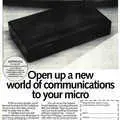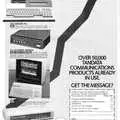Tandata Advert - March 1986
From Personal Computer World
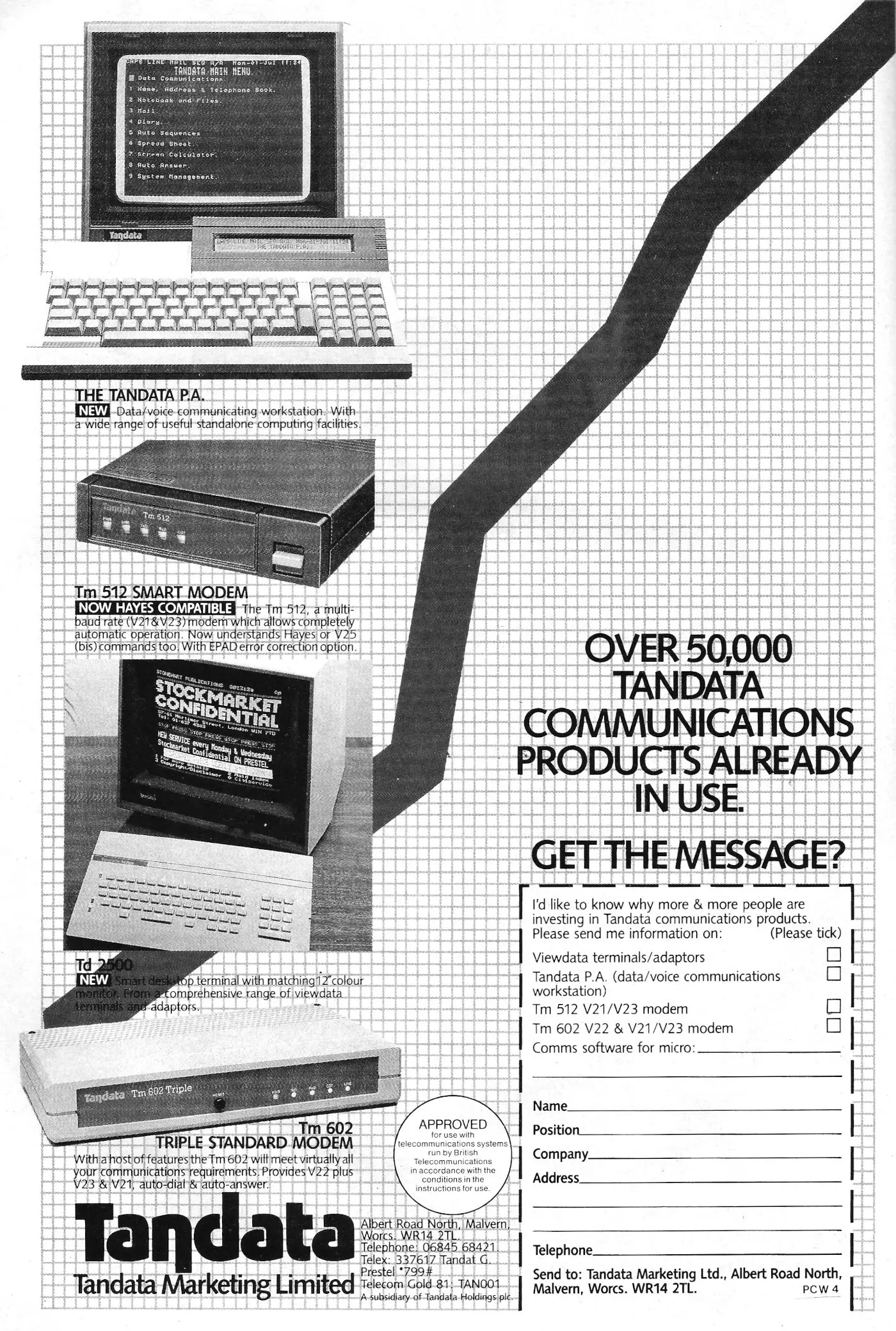
The Tandata PA - Data/voice communicating workstation
Tandata originally formed out of Tangerine, which produced a single-board computer called the Microtan 65. By 1984 it had become Tandata Holdings PLC, with Tandata Marketing Limited as one of its divisions.
Tandata here is advertising several of its products, including the Tandata PA - a data/voice communicating workstation which had been in development since 1982. The PA ran the CMOS version of Intel's 8088 - the 80C88 - running at 4.7MHz, or NEC's cloned version, the V20.
Although it came with a 12" monitor, it also had a small LCD display, making it semi-portable, a little like the NewBrain. It was not however considered as a competitor to regular desktop microcomputers, as it had absolutely no mass storage devices - anything in memory was simply saved in-between power cycles thanks to battery back-up and low-power CMOS memory.
One particularly interesting feature of the machine was that as well as regular email, like Telecom Gold, it supported direct PA-to-PA communication, with users able to dial up each other's PA systems and leave messages.
Because the PA ran a version of Unix, it could multi-task, handling auto-answering without interrupting whatever else was going on, as well as allowing other users to access data from it.
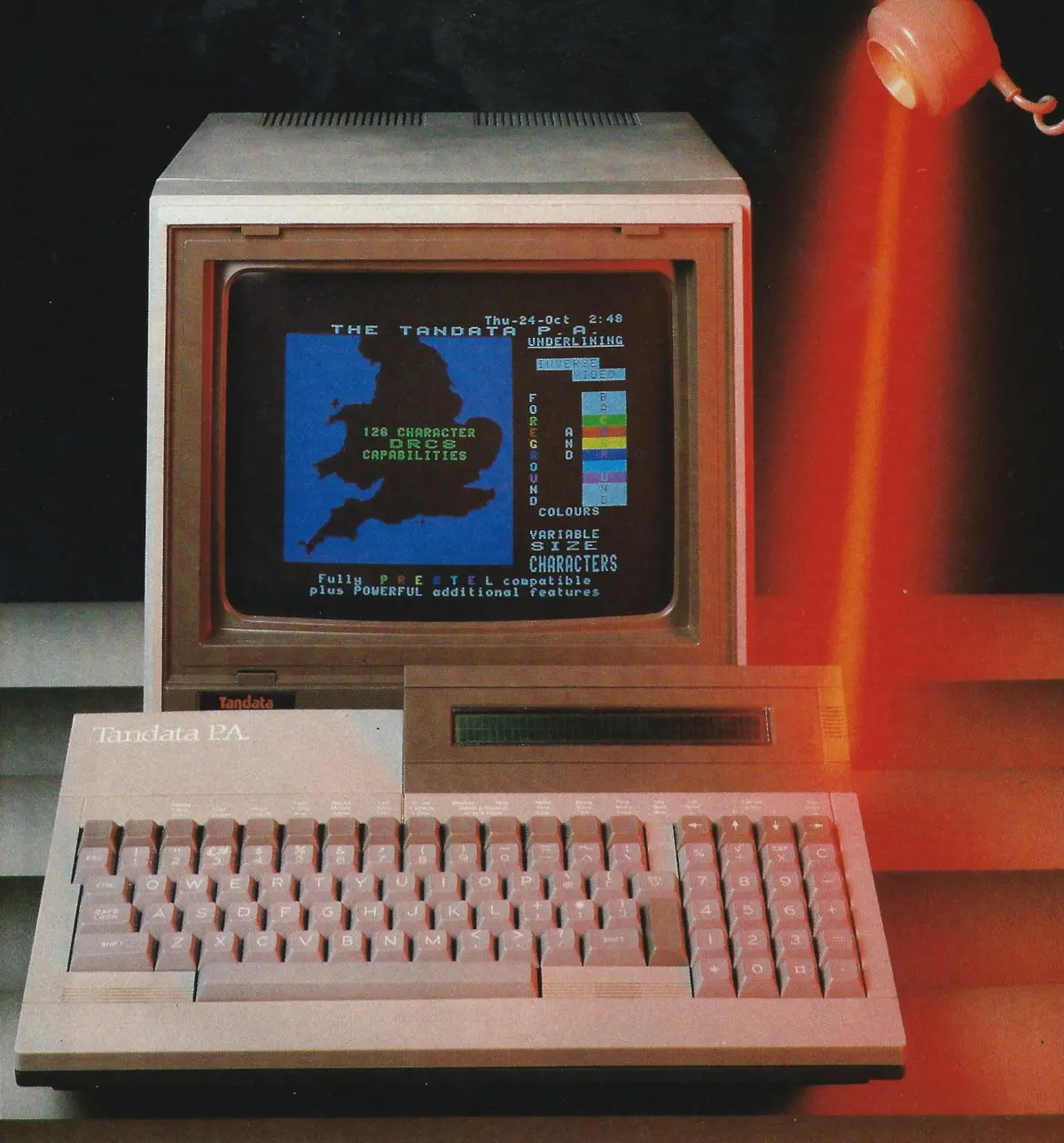
The Tandata PA, from Personal Computer World, January 1986
Originally codenamed Minerva before its release[1], Nick Walker of Personal Computer World concluded in a benchtest in January 1986's Personal Computer World that it was:
"The best telephone I've ever benchtested and I mean that in the nicest possible way. For anyone who uses their telephone intensively and uses data communctions, I could see it soon becoming invaluable. The miniature electronic mailing system alone will be reason enough for many users to buy a PA. Considering that the colour monitor is included in the price, it really is very competitive. It will be a real contender in the fight for space on the executive's desk."[2]
At the time of the review, which was on a pre-production machine, it was intended to retail at £995 - about £3,770 in 2025.
Apparently, the PA was just too ahead of its time and only sold between one and two thousand units. The market wasn't really ready, plus Tandata was well-known as a Viewdata company and even seemed to pitch it more as an "upmarket Viewdata terminal" than as a revoutionary email and communications tool.
It also became known for its random hardware failures. These were caused because the PCB was installed in the PA upside down, and the machine's system EEPROM chips - which were socketed so they could be upgraded, with a panel in the motherboard for easy access - were prone to dislodge if the machine was dropped. Because the machine was meant to be on all the time, this caused all sort of data mayhem[3].
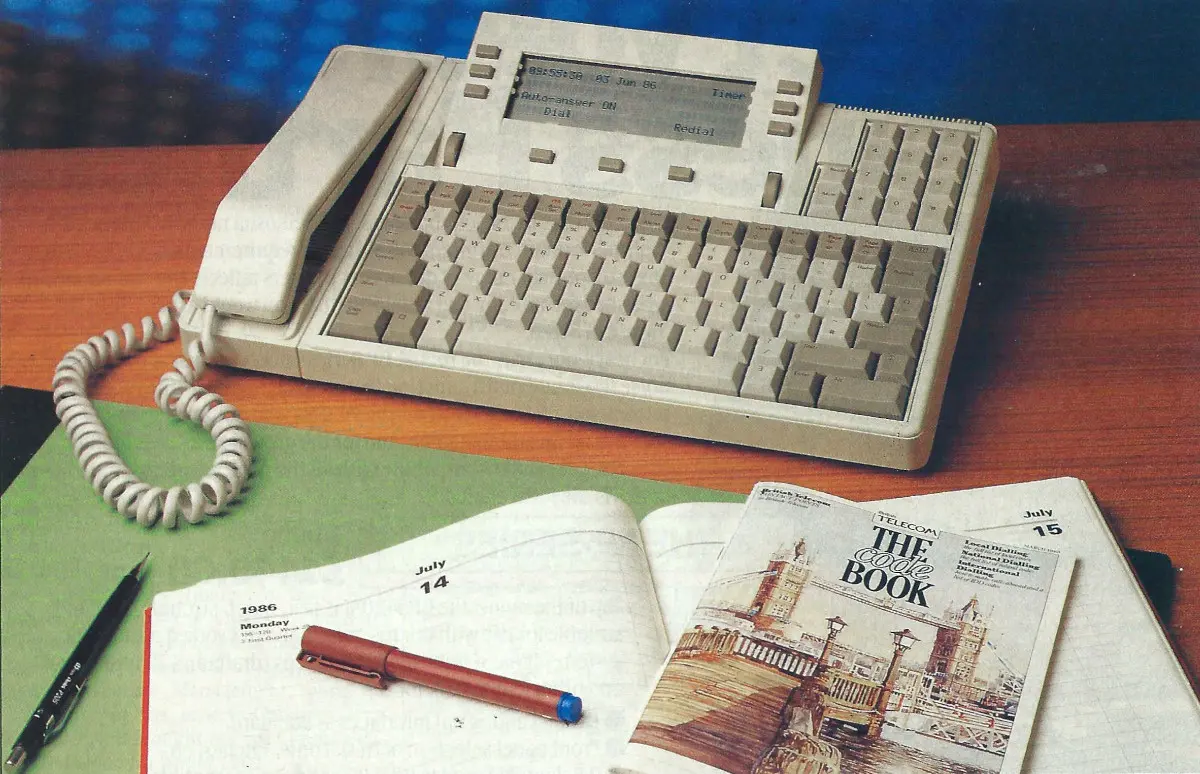
Hybrid phones/terminals were all the rage in 1986, with BT's offering - the Qwertyphone - launching in the summer of 1986. From Practical Computing, August 1986
Hybrid telephone/terminal devices seemed to be all the rage in 1986, as BT also launched something similar a couple of months later. Called the Qwertyphone, BT's device provided just 8K RAM for text storage, with an additional 8K-16K for phone-number directories.
It also offered a 64-way bus which could have a keyboard "pod" attached to it. This wasn't to plug in a separate keyboard to the phone, but was actually to allow the phone to be used as a keyboard for another micro, saving space. Unfortunately, the keys were said to be "adequate, although they feel a little dead".
Practical Computing said of it in a review of a pre-production model in its August 1986 issue that:
"The concept behind the Qwertyphone is a good one: people are asking much more of the telephone system nowadays, and it seems sensible to provide all the facilities required in one unit. The Qwertyphone's potential would be imnproved by some fairly minor design changes: in particular an improved hadnset rest, a larger screen and the ability to store larger documents would increase its appeal. It's likely to end up as an executive toy rather than as a serious piece of business equipment[4]".
Meanwhile, also shown in the main advert is the TD 2500 Viewdata/Prestel terminal, and the company's latest modem - the Tm 602 Triple.
This could now do V.21 - the "old" 300 baud format, V.23 - the 1200/75 Prestel/Viewdata format, and V.22 - a newer and faster 1200 full duplex standard.
Tandata had been selling modems since at least 1983, so it's a measure of how small the industry was at the time that 50,000 installations of Tandata modems and Viewdata terminals over the intervening three years was considered a big-enough deal to shout about.
Date created: 05 February 2024
Last updated: 11 December 2024
Hint: use left and right cursor keys to navigate between adverts.
Sources
Text and otherwise-uncredited photos © nosher.net 2025. Dollar/GBP conversions, where used, assume $1.50 to £1. "Now" prices are calculated dynamically using average RPI per year.
